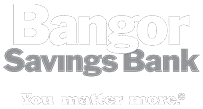
It takes extensive research and strategic planning to gain a competitive advantage. Every advantage is significant and counts for establishing your business as the leader in your particular industry, especially in today's economy and this aggressive business world.
Your target audience is a focused group of consumers that your company is looking to market to with its products and services. You've differentiated this target market by demographic, socioeconomic, and common needs or characteristics that turn them into the perfect sales audience. However, your competition is also focusing on this target market as well. By uncovering certain characteristics, you can find and gain a competitive advantage over your competitors.
Cost Leadership
Typically, businesses attempt to gain cost leadership as their first competitive advantage. This is where a business is in the position to offer the same quality products as the competition, but at a cost that is lower. Cost leadership happens when a business figures out a way to yield products at a lower cost through perfecting production methods or through using resources in a far better and more efficient manner than the competition.
Differentiation
The next strategy that companies often use for setting themselves apart from the competition is differentiation. With this strategy, reducing prices is only one of many feasible factors that can set a business apart from others. Companies that differentiate themselves usually seek out one or more features or advantages they have that will set them apart from the competition. Then they locate the sector of the market that will find those features or advantages essential and market to them.
Strategic Alliances
Companies can gain a competitive advantage by seeking strategic alliances with other companies within related or the same industry. However, companies need to be careful not to cross any lines between alliances and deceit. This deceit can happen when companies in the same industry attempt to collude to control prices. On the other hand, strategic alliances are more like joint ventures that companies use to combine resources and gain exposure for themselves at the expense of competition that is outside the alliance.
Quality
Often, customers will pay more for better quality products or services. If you have more expertise, superior design or access to higher-quality materials, product quality could be your competitive advantage. If this is the case, you would need to find market sectors that will purchase your higher-priced products.
Brand
If promoting a well-known brand is your competitive advantage, you’ll need to reach consumers who see the brand in a positive way, who need it, and can buy it. While some brands can cut across multiple market sectors, like detergents, others like sports-related brands, will need more focus.
Service
By placing an emphasis on customer satisfaction, you can compete on service. Customer service that focuses on creating higher levels of customer satisfaction implies employees have good people skills, are trained in customer relations as well as the products they support. Since customer service can get costly, businesses whose competitive advantage is customer service avoid the lower-cost market sectors and do better in the high-value sectors.
Even after you gain a competitive advantage, you are far from done. You will have to maintain your competitive advantage continuously to be successful.
